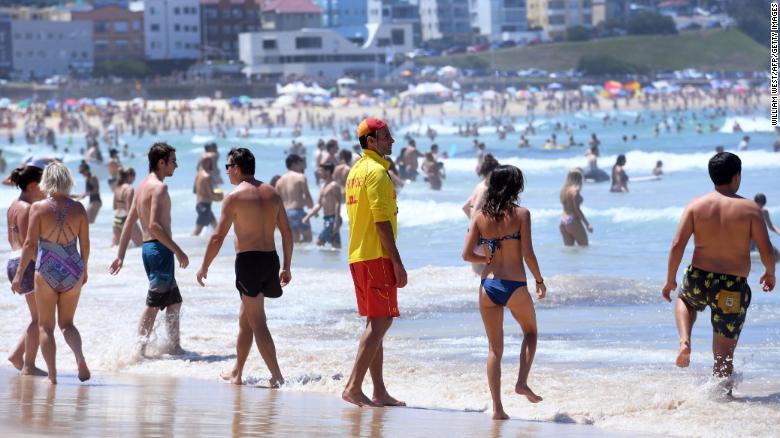The mercury rose to 47.3 degrees Celsius, or 117.14 Fahrenheit, in the Sydney metropolitan area.
The hottest temperature ever recorded in the area was 47.8 Celsius degrees (118.04 Fahrenheit) in 1939, the Bureau of Meteorology for the state of New South Wales (NSW) said.
So,
while brutally cold temperatures hit the US, emergency services in Sydney prepared residents on the other side of the equator for dangers of a different sort.
Police advised Sydneysiders to beat the heat by staying well-hydrated and out of the sun. They warned tourists to take extra care if swimming and issued a reminder that it was an offense to leave children or pets unattended in a vehicles -- actions that could be deadly in the heat.
New South Wales Ambulance tweeted that its staffers were also on alert at beaches in the harborside city amid the rising temperatures.
A total fire ban was put in place for the greater Sydney area and neighboring Hunter Region due to the hot and windy conditions expected. The NSW Rural Fire Service said the fire danger rating in both areas was "severe."
By Sunday evening local time (early Sunday morning ET) the fire service tweeted that there were 20 fires across the state, with four yet to be contained.
Temperatures were expected to remain in the high 30s to early 40s Celsius Monday and the fire ban would be continued, it said.
The hashtag refers to an old sun safety campaign -- "Slip on a shirt, slop on sunscreen and slap on a hat." The "seek" refers to shade and "slide" to to wearing sunglasses.
Australians have one of the highest rates of skin cancer in the world with approximately two out of three likely to be diagnosed with the disease by the time they are 70,
according to the Cancer Council Australia.
Tennis players fine-tuning their skills at the Sydney International ahead of the Australian Open also had to battle through the heat on the first day of the tournament.
Organizers tweeted that a big fan was in place to cool spectators down.
Social media was awash with depictions of the heat, GIFs showed burning skeletons and there were a variety of attempts at egg-frying outside.
There's some relief in sight however, with temperatures predicted to be slightly "colder" Monday --
a maximum of 33 degrees Celsius or 91.4 degrees Fahrenheit for those hunkering down in the cold further north.


